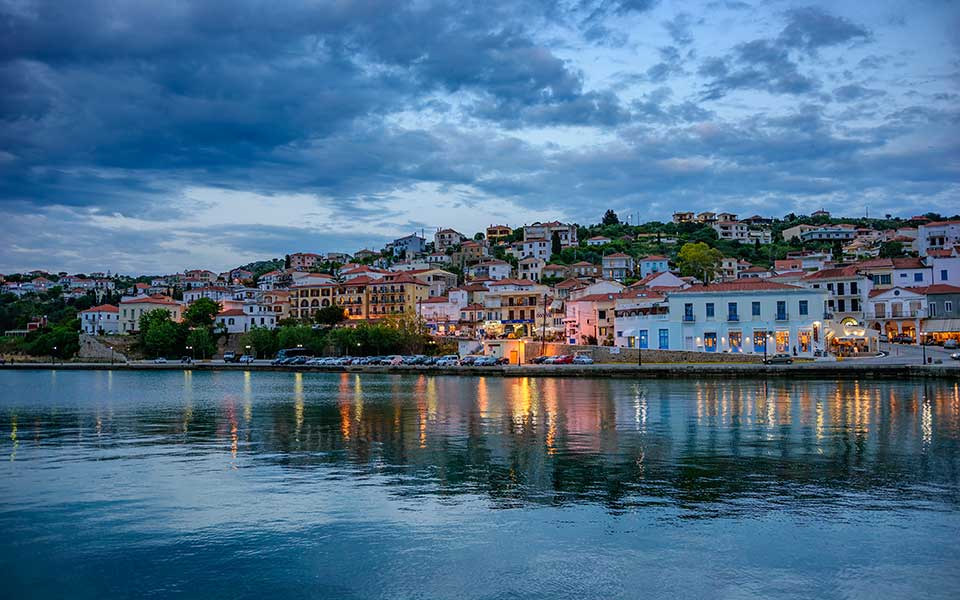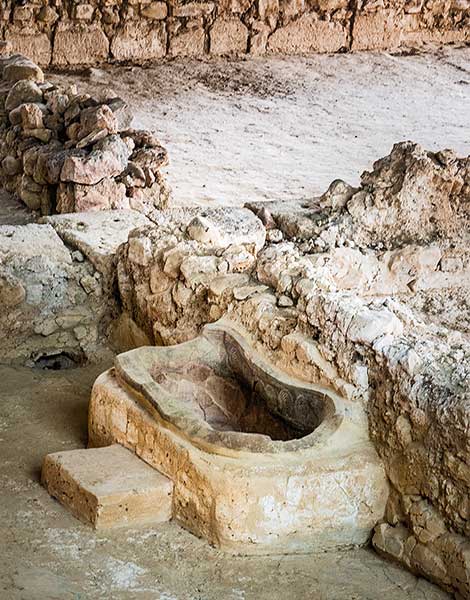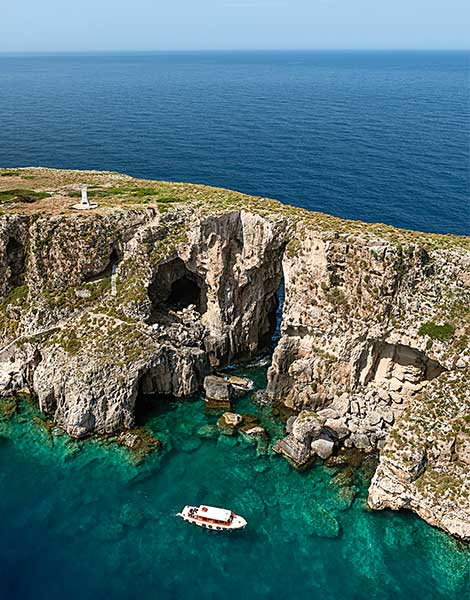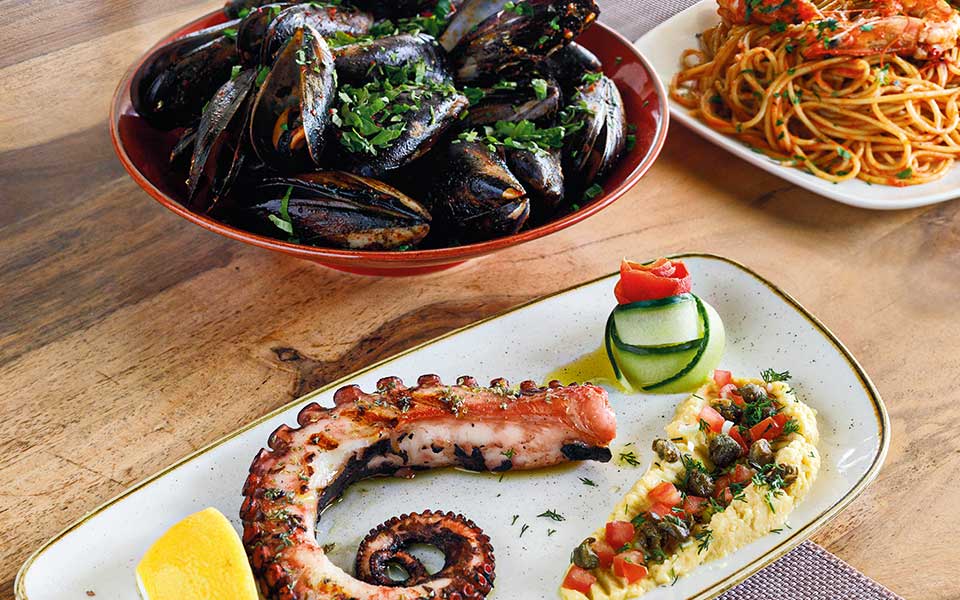A Weekend Getaway to Kalavryta and Mount Helmos
Whether by foot, car, or the...

The horseshoe-shaped beach of Voidokilia is located at the northernmost edge of Gialova lagoon.
© Thomas Linkel/LAIF
Pylos, the largest natural port of the Peloponnese on the western flank of Messinia, was once the kingdom of Nestor, a legendary character in Homer’s “Iliad” and “Odyssey.” Yet the current location of this small town, which was built by French general Nicolas Joseph Maison in 1828, does not identify with ancient Pylos.
The town is built amphitheatrically in the Gulf of Navarino, where the famed naval battle between the Allies and the Ottoman-Egyptian fleets took place in 1827. Every year, on October 20th, a reenactment is staged in the port.
Pylos combines natural beauty, beaches with golden sand and significant historical landmarks, such as the Monument to the Three Admirals (Edward Codrington, Henri de Rigny, and Lodewijk van Heiden) in Three Admirals Square, with its towering centenarian plane trees.

The port of Pylos is considered one of the safest for mooring in the Mediterranean.
© Shutterstock
Gialova lagoon is one of the most important wetlands in Europe, part of the Natura 2000 network. Mostly used as a station for migratory birds to and from Africa, it is home to approximately 250 species, such as herons, and stretches over an expanse of 6,000 square meters. It is also the only refuge in Europe for the endangered African chameleon.
Visit the observing station of the Ornithological Society (Tel. (+30) 210.822.8704) and follow the “Nature Trail” measuring 1km, which traverses a variety of ecosystems in the area. The horseshoe-shaped beach of Voidokilia is located at the northernmost edge of Gialova, while a few kilometers to the east, nestled in a verdant hill, you’ll find Kalamaris Waterfall. This natural wonder is just a 15-minute hike away, through oak and pine trees.

The Mycenaean Palace of Nestor, with the clay bath.
© Perikles Merakos

Sfaktiria boasts beaches with turquoise waters and is ideal for exploring.
© Giannis Giannelos
The well-preserved Mycenaean Palace of Nestor (Tel. (+30) 27630.314.37), built on Eglianos Hill just 15km from Pylos, includes structures such as living quarters, wine storerooms and workshops. The rectangular throne room stands out, and the adjacent bathroom, which features a well-preserved clay bathtub. West of Pylos, built on a hill by the Ottomans in 1573, stands Niokastro Fortress with the Church of the Metamorfosi tou Sotiros and the Archaeological Museum (Tel. (+30) 27230.229.55) located within its walls. The museum houses one of the most ancient Linear B clay tablets, while further north you will encounter the medieval Paliokastro, built by the Franks on the fortifications of the ancient acropolis. Take care while exploring the ruins, as the site is poorly conserved and there is limited signage.
In Pylos, you can also visit two sections of the Venetian Aqueduct and the renovated house of four-time Olympic medalist Kostas Tsiklitiras (Tel. (+30) 27230.220.10), which houses a collection of paintings and objects owned by the philhellene René Puaux.
A natural breakwater in Pylos, this long and narrow island facing the Ionian Sea is included in the Natura 2000 network. With a long history of conflict and war dating from antiquity, including a siege in 425 BC after the naval battle of Pylos in the Peloponnesian War, and the conquest by Ibrahim in 1825, it boasts beaches with wonderful waters. Rent your own vessel or jump aboard a tourist boat. Organized tours include visits to the nearby islands of Fanari and Helonakia.

Gialova lagoon is an important station for migratory birds.
© Stelios Spiropoulos
The bottom of the sea in the Gulf of Navarino and nearby areas is dotted with the remains of many shipwrecks, dating from Roman and Byzantine times as well as from the 20th century – for instance, the tanker “Irene’s Serenade” sank here in 1980. For underwater tours head to one of the many diving schools, such as Ionian Dive Center (Tel. (+30) 27630.615.51) in Marathopoli.

Fresh fish and seafood at “Kochili” taverna, in Gialova.
© Andreas Markou/adreasmarkou.com
In Gialova, head to Kochili (Tel. (+30) 27230.232.59) for fresh fish, to Carne for more creative cuisine (Tel. (+30) 27230.236.17), and for drinks go to notiωs (Tel. (+30) 27230.228.89). In Pylos, Aetos serves local cuisine by the sea, with views over Navarino Bay. The galaktoboureko (semolina custard baked in filo) from Krinos patisserie (Tel. (+30) 27230.227.56), made using the same recipe since 1937, is a local legend.
Pylos is 52km from Kalamata.
Whether by foot, car, or the...
From Mycenaean citadels to ancient stadiums,...
Anyone who has visited Tsintzina, the...
Explore Ancient Messene, enjoy the local...